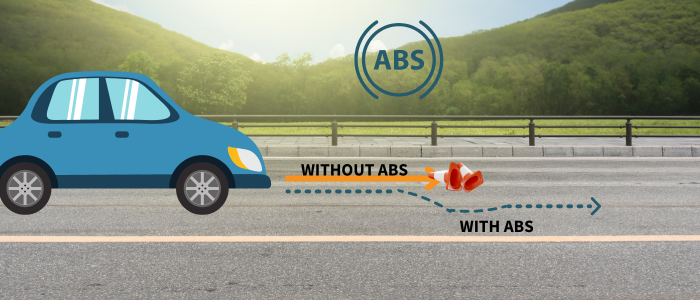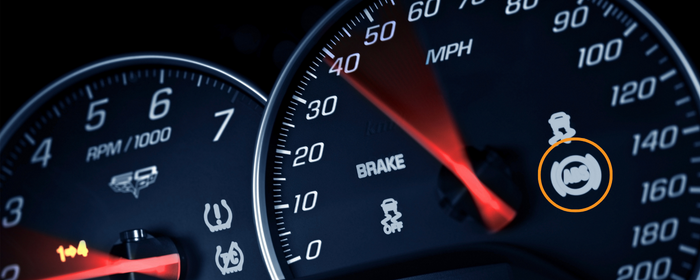
Unveiling the Power of Anti-Lock Brakes
Welcome to this blog, where GB Vehicle Leasing explain one of the most remarkable advancements in vehicle safety: the Anti-Lock Braking System (ABS). While most drivers are familiar with the term, few truly understand the groundbreaking impact this technology has had on preventing accidents and saving lives.
Imagine cruising down a wet, slippery road when suddenly a deer dashes across your path. In a split second, you instinctively slam on the brakes, only to feel the tires skidding uncontrollably. It's a heart-stopping moment that many of us have experienced or fear experiencing. But what if there was a system that could intervene and allow you to maintain control of your vehicle, even under such hazardous conditions? Enter the Anti-Lock Brake System. Keep reading to find out more.
What is ABS?
The acronym ABS stands for Anti-lock Braking System, which is a crucial safety component found in many vehicles. Its primary purpose is to prevent the wheels from locking up or skidding when the brakes are applied.
In non-ABS equipped vehicles, forceful braking can lead to wheel lock-up, resulting in a loss of steering control. However, ABS is designed to prevent this by automatically regulating the brake pressure to each wheel individually, allowing the driver to maintain steering control while braking hard.
Anti-lock brakes operate by using sensors to monitor the rotational speed of each wheel. If the system detects that one or more wheels are about to lock up, it rapidly modulates the brake pressure to that wheel. This pulsating brake pressure allows the wheel to continue rotating, maintaining traction with the road surface. The ABS system adjusts the brake pressure many times per second, allowing the driver to maintain control of the vehicle and shorten the braking distance.
ABS is particularly effective in situations such as sudden stops, braking on slippery or uneven surfaces, and during emergency manoeuvres. It is now a standard feature in most modern vehicles and has significantly improved braking safety.
The Origins of ABS
The history of Anti-lock Braking System dates back several decades and involves the contributions of multiple inventors and automotive companies. The concept of ABS was first explored in the 1950s. The idea was to develop a system that would prevent wheel lock-up during braking, thus improving vehicle control and reducing stopping distances. Various inventors and researchers began experimenting with different approaches.
In 1966, a German engineer named Karl-Heinz Bauer filed a patent for an electronic ABS system. His design used wheel sensors and a microcontroller to regulate brake pressure and prevent wheel lock-up. This patent became the foundation for future ABS developments. In the 1970s, several automotive companies, including Mercedes-Benz and Bosch, began working on ABS prototypes. Then throughout the 1980s, ABS technology advanced further.
By the 2000s, an ABS system had become a standard safety feature in most passenger vehicles. The technology continued to evolve, and additional features like electronic stability control (ESC) were integrated with ABS to provide enhanced vehicle stability and manoeuvrability. Today, an ABS system is considered a fundamental safety feature, helping to prevent accidents.

ABS vs Rear-Wheel-Only ABS
The primary difference lies in the scope of their functionality and the wheels they control during braking. ABS operates on both the front and rear wheels simultaneously, allowing the driver to maintain steering control while braking. Whereas, Rear-wheel-only ABS, also known as RWAL (Rear-Wheel Anti-lock), is a simplified version of ABS that only controls the rear wheels. It was commonly used in older vehicles.
Modern vehicles are typically equipped with full ABS systems that provide the benefits of controlling all wheels and maximising braking effectiveness, stability, and steering control. It is worth noting that rear-wheel-only ABS may not offer the same level of performance and safety advantages as full ABS, particularly in emergency braking.
In conclusion, the power of Anti-lock Braking Systems (ABS) cannot be understated when it comes to ensuring the safety and control of vehicles on the road. From its humble beginnings in the 1950s to its widespread integration in modern vehicles, ABS has transformed the way we approach braking.
If you’ve found this article interesting, visit our Facebook page for more tips and motoring advice. In particular, click here to read our related article - What is horsepower? In this blog, we dive into the fascinating realm of horsepower, examining its historical roots and its profound importance in the field of automotive engineering.
About The Author: Charlotte Kennedy
Charlotte joined the GB Vehicle Leasing team around 6 years ago starting out as an apprentice and is now being a key member of our marketing team.
Find Out More About CharlotteLatest Posts

Volkswagen Taigo vs T-Roc: How Do They Compare
Here, we explore how they compare...

Skoda Elroq Review 2025
Buckle up, folks! This new Skoda...

Pre-Registered Vehicles Explained
Learn what a pre-registered vehicle is...

Hyundai Inster Review 2025
Move over, conventional cars! The Hyundai...

Vehicle Delivery Lead Times Explained
From custom factory orders to in...



































